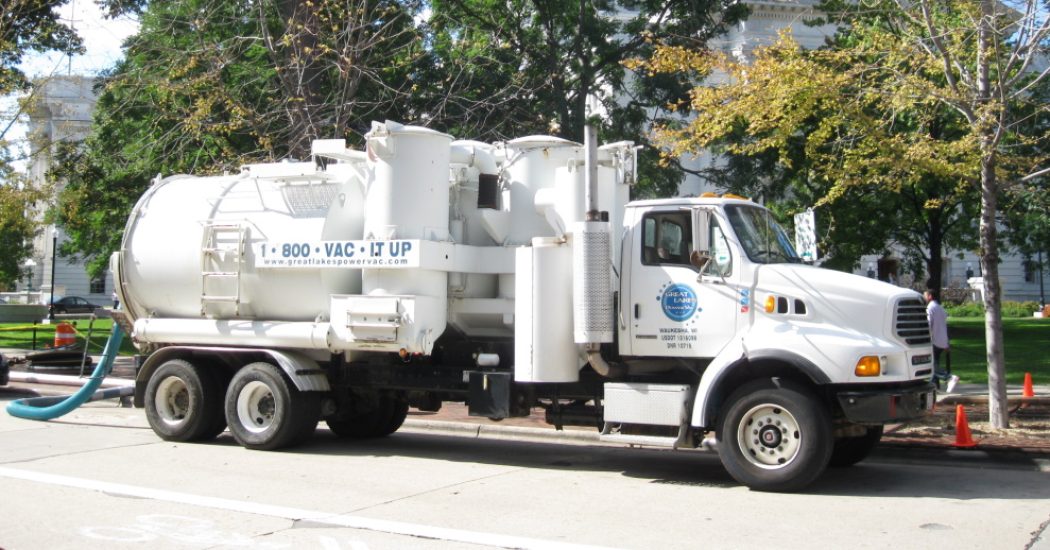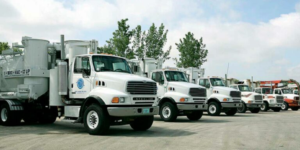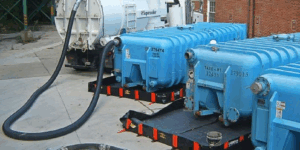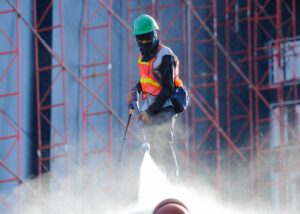Introduction to Combustible Dust
Combustible dust represents a significant safety hazard in various industries, posing risks of fires and explosions that can lead to catastrophic damage and loss of life. Industries such as manufacturing, processing, and agricultural facilities in the United States are highly susceptible to combustible dust incidents. Understanding the nature of combustible dust, its causes, effects, and management are crucial for ensuring workplace safety and compliance with regulations.
Understanding Combustible Dust
Combustible dust is any fine material that can ignite under specific conditions. When suspended in air in sufficient concentrations, it can become highly flammable. Materials that can form combustible dust include metals like aluminum and magnesium, coal, wood, and many organic materials such as grains, sugar, and paper.
| Material | Ignition Temperature (°C) | Minimum Explosive Concentration (g/m³) |
| Aluminum | 610 | 30 |
| Sugar | 350 | 150 |
| Grain Dust | 380 | 40 |
| Coal | 480 | 50 |
The Dangers of Combustible Dust
Combustible dust explosions are harmful due to their unpredictability and the severe consequences that often result. According to the Chemical Safety Board (CSB), between 1980 and 2023, there were approximately 281 dust explosions in the U.S., resulting in 119 fatalities and 718 injuries. Dust explosions can occur when a combustible dust cloud contacts an ignition source, leading to a rapid release of heat and energy.
Legal and Safety Standards
The Occupational Safety and Health Administration (OSHA) has established several guidelines and standards to prevent industrial dust explosions. National Fire Protection Association (NFPA) provides comprehensive standards, such as NFPA 68, which focuses on explosion protection by deflagration venting. Compliance with these regulations is essential to mitigate risks and improve safety in facilities handling combustible dust.
Managing Combustible Dust Risks
Effective management of combustible dust involves a combination of housekeeping, engineering controls, and administrative practices. Regular cleaning to prevent dust accumulation, using dust collection systems, and conducting risk assessments are vital. Employers should regularly inspect and maintain equipment, educate workers about hazards, and develop emergency response plans.
Technological Advances in Dust Management
Technological progress has led to advanced solutions for detecting and neutralizing combustible dust risks. Dust sensors, advanced filtration systems, and real-time monitoring technologies can help prevent dangerous accumulations. Organizations like Great Lakes Power Vac provide specialized vacuum services that aid in removing combustible dust safely and efficiently.
Challenges in Combustible Dust Management
Despite technological advancements, challenges remain in managing combustible dust in facilities. Constraints include costs associated with implementing robust safety systems and continually educating staff. Moreover, regulatory compliance and inconsistencies in global standards can hinder effective management efforts.
Case Studies of Combustible Dust Incidents
Historical case studies provide insight into the catastrophic effects of combustible dust. The 2008 Imperial Sugar refinery explosion in Georgia, for example, resulted in 14 deaths and 36 injuries. Investigations revealed that poor housekeeping and ineffective dust management practices were contributing factors, highlighting the critical need for stringent dust control measures.
Best Practices for Combustible Dust Management
Implementing industry best practices for managing combustible dust involves a proactive approach: regular audits, continuous employee training, and adopting innovative dust control technologies. Collaboration with experts, such as those from Great Lakes Power Vac, ensures that these practices are up to date and effective.
The Future of Combustible Dust Management
The future of combustible dust management is geared towards integrating AI and IoT for intelligent monitoring and response systems. These technologies promise to enhance predictive maintenance and provide real-time alerts for early intervention. As safety standards evolve, leveraging technology will be crucial for eliminating hazards associated with combustible dust.
Key Takeaways
Combustible dust represents a significant hazard in industrial environments, requiring a combination of regulatory adherence, continual risk assessment, and technological integration for effective management. By understanding the science, actively managing the risks, and adopting best practices, industries can safeguard human lives and assets against the perils of combustible dust explosions.
Frequently Asked Questions
What is combustible dust?
Combustible dust is a fine particulate matter that, when suspended in air under specific conditions, becomes explosive upon ignition. It encompasses a wide range of materials including metals, coal, wood, and some organic items such as grains and sugar. Such dust is dangerous due to its ability to ignite and cause fires or explosions, particularly in confined spaces where it can concentrate. Its management is crucial in industries where these dust forms are regularly produced.
Why is combustible dust dangerous?
Combustible dust is perilous due to its potential to cause catastrophic explosions and fires. When suspended in air, dust particles can easily ignite if they come into contact with an ignition source, such as a spark. These explosions are often rapid and forceful, leading to significant damage and potential loss of life. Historical incidents underscore the importance of meticulous dust management to prevent such occurrences.
How can industries manage combustible dust risks?
Industries can manage combustible dust risks through comprehensive strategies that include regular housekeeping, employing engineering controls like dust collection systems, and training personnel to recognize and mitigate risks. It is also essential to conduct frequent audits and maintenance of equipment, ensuring that both technological solutions and human resources work effectively together to prevent dust accumulation and possible ignition.
What are the legal obligations regarding combustible dust?
Legal obligations regarding combustible dust are delineated by occupational safety agencies such as OSHA and standards organizations like NFPA. Compliance with these regulations involves adhering to guidelines on dust control, maintaining clean environments, and implementing hazard communication standards. Employers must ensure that their facilities meet these requirements to protect their workers and avoid penalties.
How has technology improved combustible dust management?
Technology has introduced advanced solutions for combustible dust management, including dust detection sensors, enhanced filtration systems, and real-time monitoring technologies. These innovations enable facilities to identify hazards early and respond swiftly to prevent dust accumulations that could lead to dangerous conditions. Organizations such as Great Lakes Power Vac offer state-of-the-art vacuum services that ensure effective dust removal, demonstrating the significant role technology plays in enhancing safety measures.
Combustible dust is a fine particulate matter that, when suspended in air under specific conditions, becomes explosive upon ignition. It encompasses a wide range of materials including metals, coal, wood, and some organic items such as grains and sugar. Such dust is dangerous due to its ability to ignite and cause fires or explosions, particularly in confined spaces where it can concentrate. Its management is crucial in industries where these dust forms are regularly produced.
Combustible dust is perilous due to its potential to cause catastrophic explosions and fires. When suspended in air, dust particles can easily ignite if they come into contact with an ignition source, such as a spark. These explosions are often rapid and forceful, leading to significant damage and potential loss of life. Historical incidents underscore the importance of meticulous dust management to prevent such occurrences.
Industries can manage combustible dust risks through comprehensive strategies that include regular housekeeping, employing engineering controls like dust collection systems, and training personnel to recognize and mitigate risks. It is also essential to conduct frequent audits and maintenance of equipment, ensuring that both technological solutions and human resources work effectively together to prevent dust accumulation and possible ignition.
Legal obligations regarding combustible dust are delineated by occupational safety agencies such as OSHA and standards organizations like NFPA. Compliance with these regulations involves adhering to guidelines on dust control, maintaining clean environments, and implementing hazard communication standards. Employers must ensure that their facilities meet these requirements to protect their workers and avoid penalties.
Technology has introduced advanced solutions for combustible dust management, including dust detection sensors, enhanced filtration systems, and real-time monitoring technologies. These innovations enable facilities to identify hazards early and respond swiftly to prevent dust accumulations that could lead to dangerous conditions. Organizations such as Great Lakes Power Vac offer state-of-the-art vacuum services that ensure effective dust removal, demonstrating the significant role technology plays in enhancing safety measures.







